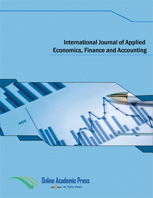Restrictions on the Emission of a Digital Currency in a Central Reserve Bank for Minor Transactions
DOI:
https://doi.org/10.33094/ijaefa.v14i2.692Keywords:
Central bank digital currency, Digital currency, Digital payments, Pilot plan, Retail transactions.Abstract
The objective of this study was to identify the challenges that the Central Reserve Bank of Peru has faced with the issuance of a digital currency that can be used as a substitute for cash in retail transactions. The study was carried out by using the hypothetical-deductive method with a basic descriptive approach rather than an experimental one. To estimate the probability of creating the Digital Currency of the Central Bank and the economic variables that explain its challenges and cross-sectional information obtained from the 2020 National Household Survey with the discrete choice model (Logit). According to the research results, i) the possibility of using a digital currency increases by 46.83% if you have a formal job compared to an informal job. ii) If the individual has an internet connection, the probability of using digital currency is 8.54%. iii) If he lives in a rural area, the probability of using digital currency is 1.79. iv) The educational level influences the probability of the use of digital currency by 1.47% if they have secondary education 16.34% have no higher education and 26.44% having university education. v) Individual’s age is important for the use of a digital currency. Older people are less likely to adapt to technology than people between the age of 18 and 24 with 8.74% use of digital currency. vi) People considered poor will have a probability of reduction of 2.26% by the use of digital currency. These findings allow the researcher to conclude that public policies should be undertaken to increase financial inclusion, close connectivity gaps and create alliances with private investment to enhance people's digital skills and the adoption of digital means of payment.




